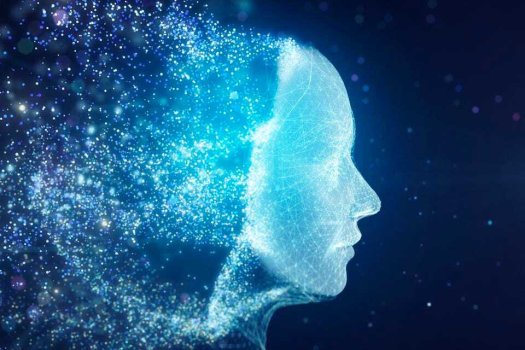K
Kathleen Martin
Guest
Making predictions for the year ahead is an age-old tradition, but some are easier than others. For instance, saying 2022 will see a new Marvel movie is a pretty safe bet. Looking into a crystal ball and predicting technology movements is a lot harder — especially with factors like Covid, climate change and ongoing supply chain disruption adding so much chaos to the mix. There is also the risk that overblown promises for one technology or another can wear out readers, making them much less trusting of future predictions.
With all of this in mind, here are my predictions for technology in 2022 — not based on any clairvoyance, but on my understanding of technology, industry and society.
AI 2.0 will do more heavy lifting, but won’t replace people.
People have always made overblown promises for AI, which have inevitably ended in a damp squib. But in 2022, we should start to see AI 2.0 come to the fore. What does this mean? If AI 1.0 was about improving operational efficiencies through automating repetitive tasks, then AI 2.0 will be characterized by reducing human involvement while helping people make better decisions. Ultimately, instead of being programmed to follow sequential instructions, computers will be "trained" to make concurrent, parallel computations and arrive at better insights, faster. This doesn’t make humans any less important in the decision-making process. But it does mean that AI will be able to analyze vast datasets, triage potential courses of action and present the human at the end with fewer, better options to choose from. Similarly, with the growing emergence of Web 3.0, consumers will be able to better and more effectively engage with businesses through the use of AI and machine learning. Indeed, AI 2.0 will be one of the key technologies that brings Web 3.0 closer to fruition.
Of course, data will be at the heart of this shift. AI already creates vast quantities of data, and AI 2.0 will create more than humans can manage manually. As such, it will be characterized by an autonomous approach to data management: machines managing machine-generated data to enable machines to help people make decisions. This means there will be a growing emphasis on explainability. The more of a role that AI has in managing and analyzing data, the more we’ll need to be able to see why and how it’s reached its decisions.
Everything we do will involve a digital interaction.
The digital and physical worlds will keep merging in our daily lives throughout 2022. From reviewing and rearranging our finances and managing doctor's appointments to buying and fitting new furniture, digital interactions will be an inevitable part of the experience, even if we do most of it in person. At the same time, the way in which we process these transactions will keep evolving, as we see new adoption of and uses for blockchain technologies such as cryptocurrencies and NFTs. IDC’s Data Age 2025 report certainly shares this perspective: It says that people’s digital daily interactions will jump to nearly 5,000 over the next three years, up from the 2020 average of 601.
Continue reading: https://www.forbes.com/sites/forbestechcouncil/2022/01/27/into-the-unknown-ai-edge-and-other-digital-predictions-for-2022/?sh=15a098f054a1
With all of this in mind, here are my predictions for technology in 2022 — not based on any clairvoyance, but on my understanding of technology, industry and society.
AI 2.0 will do more heavy lifting, but won’t replace people.
People have always made overblown promises for AI, which have inevitably ended in a damp squib. But in 2022, we should start to see AI 2.0 come to the fore. What does this mean? If AI 1.0 was about improving operational efficiencies through automating repetitive tasks, then AI 2.0 will be characterized by reducing human involvement while helping people make better decisions. Ultimately, instead of being programmed to follow sequential instructions, computers will be "trained" to make concurrent, parallel computations and arrive at better insights, faster. This doesn’t make humans any less important in the decision-making process. But it does mean that AI will be able to analyze vast datasets, triage potential courses of action and present the human at the end with fewer, better options to choose from. Similarly, with the growing emergence of Web 3.0, consumers will be able to better and more effectively engage with businesses through the use of AI and machine learning. Indeed, AI 2.0 will be one of the key technologies that brings Web 3.0 closer to fruition.
Of course, data will be at the heart of this shift. AI already creates vast quantities of data, and AI 2.0 will create more than humans can manage manually. As such, it will be characterized by an autonomous approach to data management: machines managing machine-generated data to enable machines to help people make decisions. This means there will be a growing emphasis on explainability. The more of a role that AI has in managing and analyzing data, the more we’ll need to be able to see why and how it’s reached its decisions.
Everything we do will involve a digital interaction.
The digital and physical worlds will keep merging in our daily lives throughout 2022. From reviewing and rearranging our finances and managing doctor's appointments to buying and fitting new furniture, digital interactions will be an inevitable part of the experience, even if we do most of it in person. At the same time, the way in which we process these transactions will keep evolving, as we see new adoption of and uses for blockchain technologies such as cryptocurrencies and NFTs. IDC’s Data Age 2025 report certainly shares this perspective: It says that people’s digital daily interactions will jump to nearly 5,000 over the next three years, up from the 2020 average of 601.
Continue reading: https://www.forbes.com/sites/forbestechcouncil/2022/01/27/into-the-unknown-ai-edge-and-other-digital-predictions-for-2022/?sh=15a098f054a1

